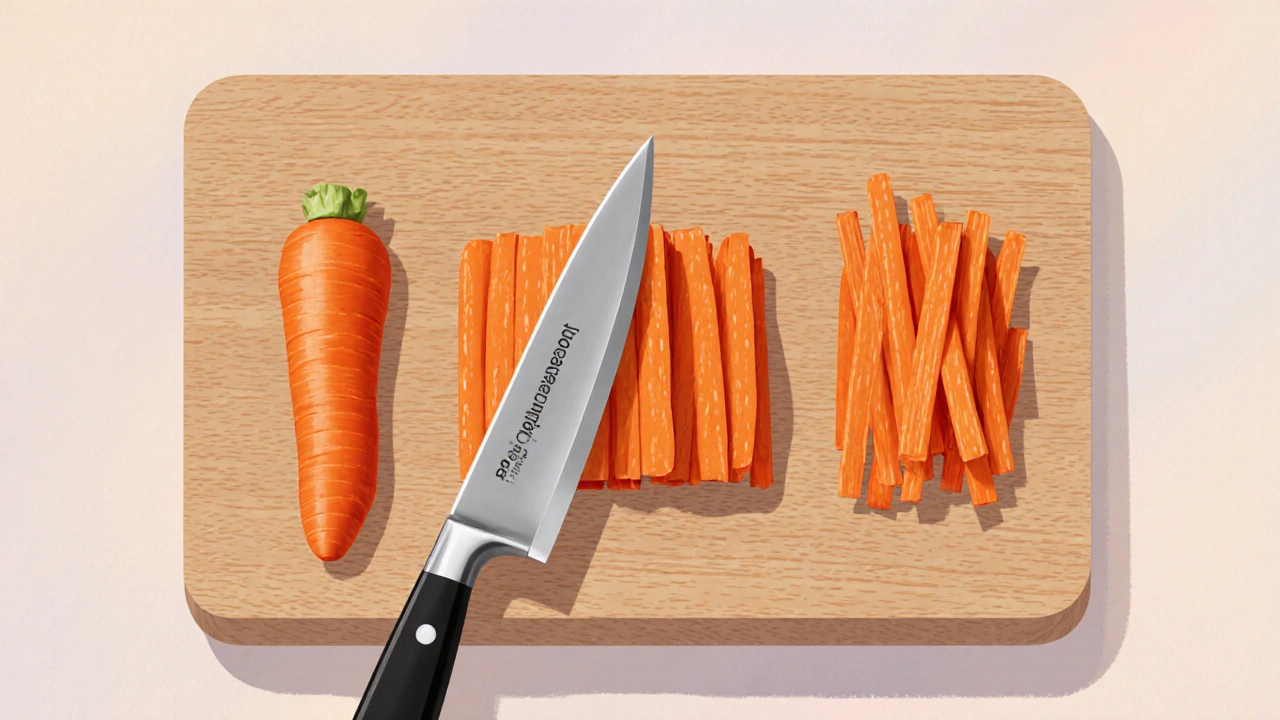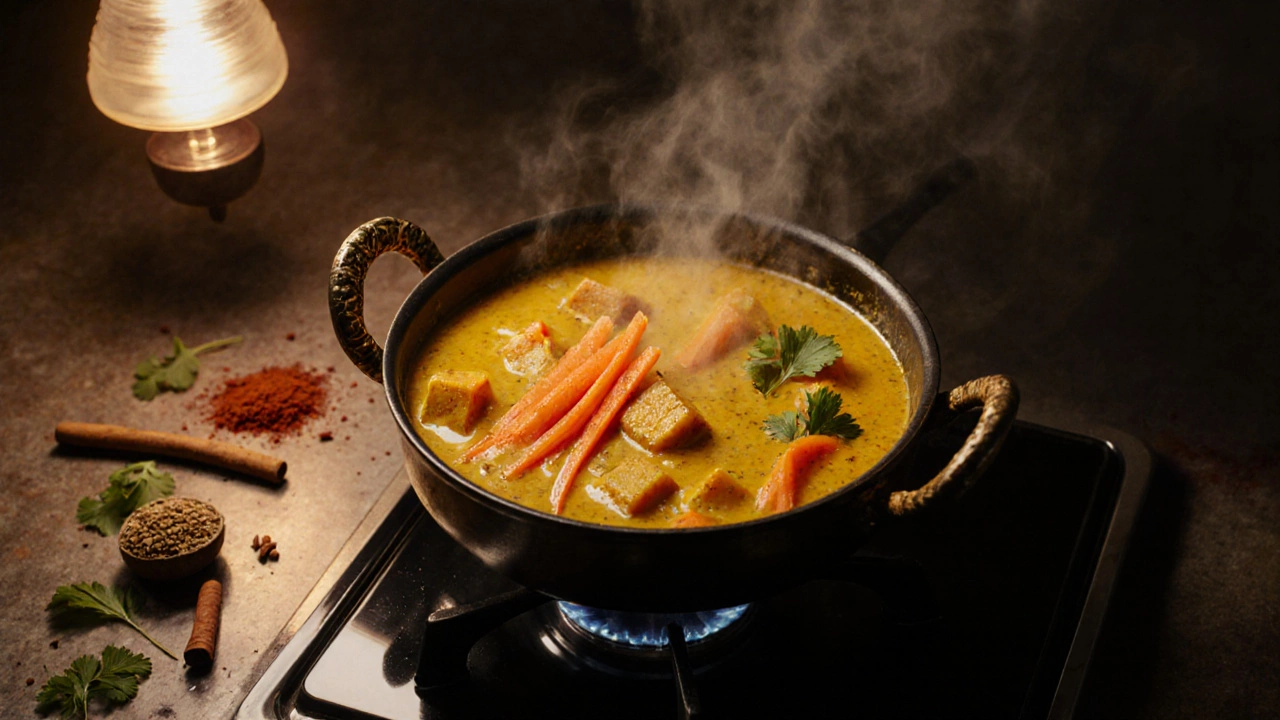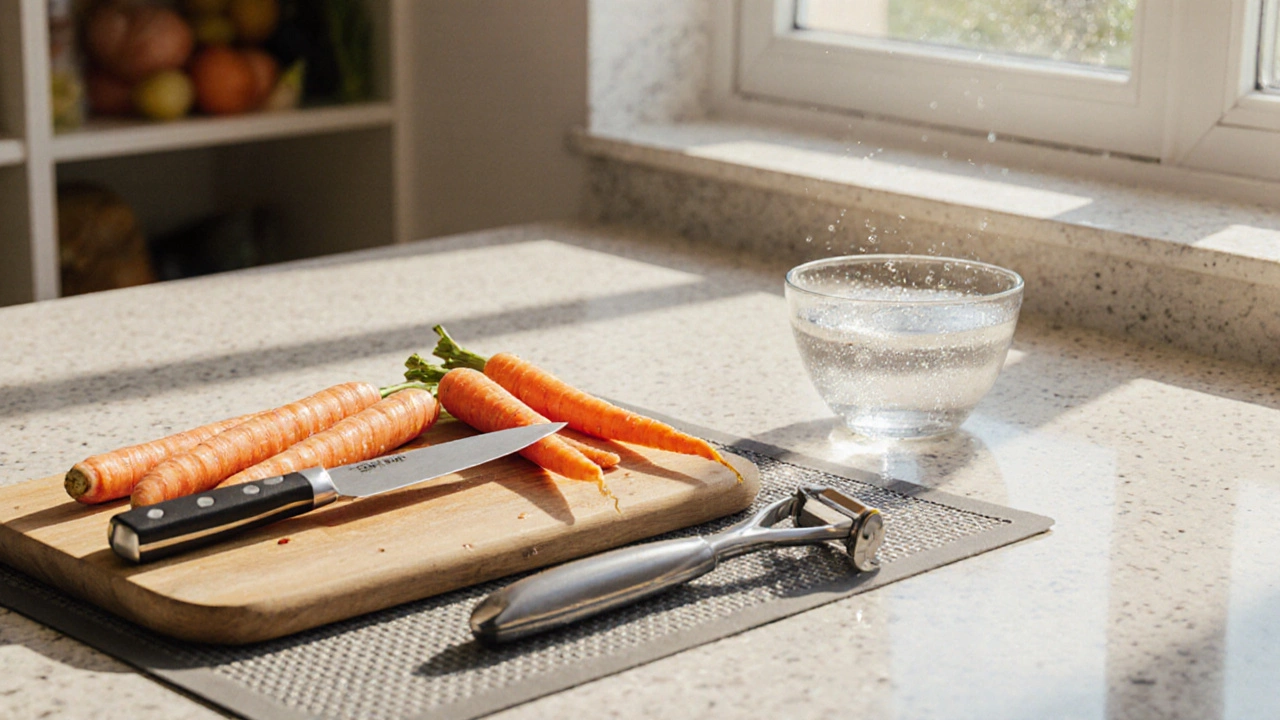Carrot Cutting Guide for Curry
Recommended Carrot Cut
Details:
Cutting Technique Overview
Thin Strips
2 mm × 2 mm × 5 cm
Uniform Cubes
5 mm × 5 mm × 5 mm
Thick Sticks
1 cm × 1 cm × 5 cm
Each cut affects cooking time and final texture. Choose based on your curry style and desired outcome.
When you’re building a fragrant curry, the texture of each vegetable matters - especially the carrots. A properly sized piece cooks evenly, absorbs spices, and blends seamlessly with the sauce. Here’s how to cut carrots for curry like a pro, whether you prefer thin strips, bite‑size cubes, or sturdy sticks.
Why the Right Cut Matters
The carrot’s natural sweetness can dominate a dish if it’s overcooked, but the right cut lets it soften just enough to mingle with the heat and spices. Smaller pieces finish in minutes, keeping the carrot’s crunch, while larger sticks stay firm and add texture contrast. Choosing the appropriate size also influences how the flavors distribute: thin julienne strips coat quickly, whereas dice absorb sauce gradually.
Essential Tools
A sharp chef’s knife an 8‑inch, high‑carbon blade that offers precise control is the workhorse. Pair it with a sturdy cutting board preferably wood or bamboo to protect the blade and keep the veggies steady. A vegetable peeler designed to glide off thin skin without wasting flesh saves time. If you like to keep the board clean, a silicone mat underneath can catch juice.
Preparing the Carrot: Peel and Trim
First, give the carrot a quick rinse under cold water. Using the peeler, remove the outer skin-most of the bitterness sits there. Trim both ends with the knife; the tip can be a bit woody, and the root end is often uneven. If you’re working with long carrots, you may want to cut them into 4‑inch sections to make handling easier.

Cutting Techniques Explained
There are three main ways to slice carrots for curry:
- Julienne thin match‑stick strips about 2mm×2mm×5cm - ideal for quick‑cooking curries where you want the carrot to blend with the sauce.
- Dice uniform cubes, typically 5mm on each side - perfect for chunky gravies that need a bite.
- Baton thicker sticks about 1cm×1cm×5cm - great for slow‑simmered curries where the carrot should stay firm.
All three cuts start with the same base: a flat, stable surface and a steady grip.
Step‑by‑Step Guide for Each Cut
Julienne
- Slice the trimmed carrot lengthwise into 2‑mm slabs.
- Stack a few slabs together, then cut them into 2‑mm strips.
- Separate the strips gently to avoid clumping.
Dice
- Cut the carrot into 5‑mm thick rounds.
- Line up the rounds and slice them into 5‑mm sticks.
- Turn the sticks and chop across to form 5‑mm cubes.
Baton
- Slice the carrot into 1‑cm thick rounds.
- Cut each round into 1‑cm wide sticks (like French fries).
- Leave them as‑is for a hearty bite.
Cooking Tips: When to Add Carrots
Timing depends on the cut:
- Julienne: Add 2-3 minutes after the aromatics so they soften but keep a slight crunch.
- Dice: Toss in with the onions; they’ll need about 5-7 minutes to meld with the gravy.
- Baton: Introduce early, about 10 minutes before the curry finishes, giving them time to soften without falling apart.
Remember that the heat of the oil activates the Indian spices like cumin, coriander, and turmeric that create the characteristic curry flavor. A quick stir‑fry of the carrots with spices before adding liquid locks in aroma.

Common Mistakes and How to Fix Them
Uneven pieces: Use a ruler or your finger width as a guide. Uniform size ensures consistent cooking.
Over‑peeling: Only remove the thin outer layer. Excessive peeling wastes edible flesh and can make the carrot dry.
Using a dull knife: A blunt blade crushes fibers, producing mushy pieces. Sharpen your knife regularly or use a honing steel before you start.
Adding carrots too early in a fast‑cooking curry: They’ll turn to mush. Adjust timing based on the cut size as mentioned above.
Choosing the Best Cut for Your Curry Style
If you love a silky, well‑blended sauce, go for julienne. For a rustic, stew‑like curry with chunky vegetables, dice is your friend. When you want a hearty bite that holds its shape in long‑simmered dishes, baton works best. Think about the overall texture you desire and pick the cut that matches that vision.
Quick Reference Table
| Cut Type | Typical Size | Cooking Time | Best Curry Use |
|---|---|---|---|
| Julienne | 2mm×2mm×5cm | 2-3min | Quick‑simmer sauces, where carrots should blend |
| Dice | 5mm×5mm×5mm | 5-7min | Thick gravies, chunky veg curries |
| Baton | 1cm×1cm×5cm | 10min (early addition) | Slow‑cook stews, robust curries |
Frequently Asked Questions
Do I need to peel carrots for curry?
Peeling removes the thin, sometimes bitter skin and gives a smoother texture, but if the carrots are young and the skin is thin, you can skip it. Just give them a good wash.
Can I use frozen carrots?
Yes, but thaw them first and pat dry. Frozen carrots are already cut, so adjust cooking time-usually a minute or two less than fresh.
What’s the difference between julienne and baton?
Julienne is a thin match‑stick; baton is a thick stick. Julienne cooks fast and blends, while baton stays firm and adds texture.
Should I add carrots at the beginning of the curry?
Only if you’re using baton cuts. For dice or julienne, add them later to avoid over‑cooking.
How do I keep carrots from turning orange when stored?
Store peeled carrots in water with a splash of lemon juice, or wrap them in a damp paper towel inside a zip‑lock bag.
